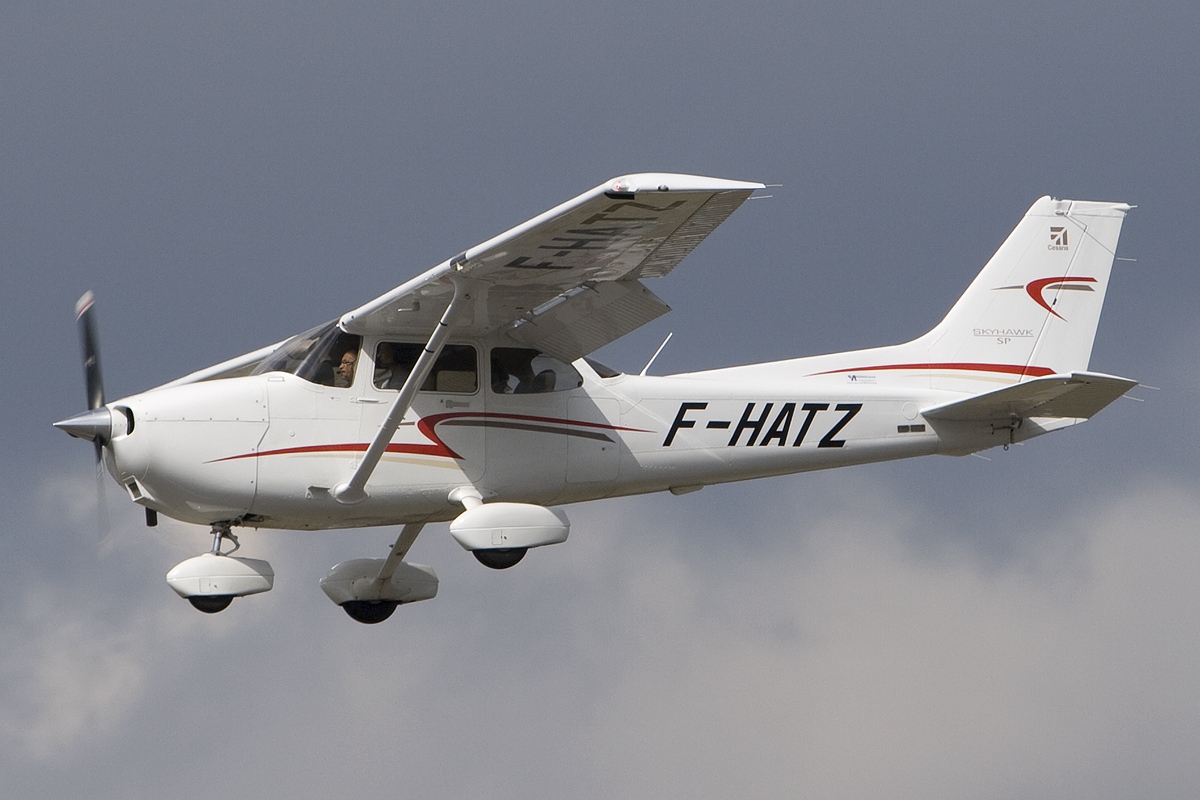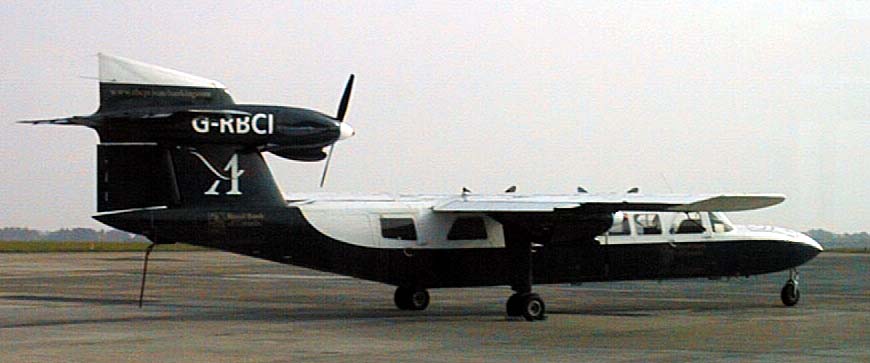Tractor Aircraft on:
[Wikipedia]
[Google]
[Amazon]


 In
In
"Propellers and tractor-screws"
Correspondence ''Flight'' 23 April 1910. The


 In
In aviation
Aviation includes the activities surrounding mechanical flight and the aircraft industry. ''Aircraft'' includes fixed-wing and rotary-wing types, morphable wings, wing-less lifting bodies, as well as lighter-than-air craft such as hot air ...
, the term tractor configuration refers to an aircraft
An aircraft is a vehicle that is able to fly by gaining support from the air. It counters the force of gravity by using either static lift or by using the dynamic lift of an airfoil, or in a few cases the downward thrust from jet engines ...
constructed in the standard configuration with its engine
An engine or motor is a machine designed to convert one or more forms of energy into mechanical energy.
Available energy sources include potential energy (e.g. energy of the Earth's gravitational field as exploited in hydroelectric power gen ...
mounted with the propeller
A propeller (colloquially often called a screw if on a ship or an airscrew if on an aircraft) is a device with a rotating hub and radiating blades that are set at a pitch to form a helical spiral which, when rotated, exerts linear thrust upon ...
in front of it so that the aircraft is "pulled" through the air. Oppositely, the pusher configuration
In an aircraft with a pusher configuration (as opposed to a tractor configuration), the propeller(s) are mounted behind their respective engine(s). Since a pusher propeller is mounted behind the engine, the drive shaft is in compression in nor ...
places the airscrew behind and propels the aircraft forward. Through common usage, the word "propeller" has come to mean any airscrew, whether it actually propels or pulls the plane.
In the early years of powered aviation both tractor and pusher designs were common. However, by the midpoint of the First World War
World War I (28 July 1914 11 November 1918), often abbreviated as WWI, was one of the deadliest global conflicts in history. Belligerents included much of Europe, the Russian Empire, the United States, and the Ottoman Empire, with fightin ...
, interest in pushers declined and the tractor configuration dominated. Today, propeller-driven aircraft are assumed to be tractors unless it is stated otherwise.
Origins
The first airplane to have a "tractor" configuration was the Goupy No.2 (first flight on 11 March 1909) designed by Mario Calderara and financed by Ambroise Goupy at the French firmBlériot Aéronautique
Blériot Aéronautique was a French aircraft manufacturer founded by Louis Blériot. It also made a few motorcycles between 1921 and 1922 and cyclecars during the 1920s.
Background
Louis Blériot was an engineer who had developed the first p ...
. When it was constructed, it was the fastest airplane in existence. At that time a distinction was made between a propeller ("pushes the machine", akin to a ship's propeller) and a tractor- ircrew ("pulls the machine through the air").Correspondence ''Flight'' 23 April 1910. The
Royal Flying Corps
"Through Adversity to the Stars"
, colors =
, colours_label =
, march =
, mascot =
, anniversaries =
, decorations ...
called the tractors "Bleriot type" after Louis Bleriot Louis may refer to:
* Louis (coin)
* Louis (given name), origin and several individuals with this name
* Louis (surname)
* Louis (singer), Serbian singer
* HMS ''Louis'', two ships of the Royal Navy
See also
Derived or associated terms
* Lewis ...
to distinguish them from pushers, or "Farman type".
World War I military aviation
The downside of a single-engine tractor aircraft was that it was initially impossible to fire a gun through the propeller arc without striking the propeller blades. Early solutions included mounting guns (rifle
A rifle is a long-barreled firearm designed for accurate shooting, with a barrel that has a helical pattern of grooves ( rifling) cut into the bore wall. In keeping with their focus on accuracy, rifles are typically designed to be held with ...
s or machine gun
A machine gun is a fully automatic, rifled autoloading firearm designed for sustained direct fire with rifle cartridges. Other automatic firearms such as automatic shotguns and automatic rifles (including assault rifles and battle rifles) a ...
s) to fire around the propeller arc, either at an angle to the side – which made aiming difficult – or on the top wing of a biplane
A biplane is a fixed-wing aircraft with two main wings stacked one above the other. The first powered, controlled aeroplane to fly, the Wright Flyer, used a biplane wing arrangement, as did many aircraft in the early years of aviation. While ...
so that the bullets passed over the propeller arc.
The first system to fire through the propeller was developed by French engineer Eugene Gilbert
Eugene may refer to:
People and fictional characters
* Eugene (given name), including a list of people and fictional characters with the given name
* Eugene (actress) (born 1981), Kim Yoo-jin, South Korean actress and former member of the sin ...
for Morane-Saulnier
Aéroplanes Morane-Saulnier was a French aircraft manufacturing company formed in October 1911 by Raymond Saulnier (aircraft manufacturer), Raymond Saulnier (1881–1964) and the Robert and Léon Morane, Morane brothers, Léon (1885–1918) and ...
, and involved fitting metal "deflector wedges" to the propeller blades of a Morane-Saulnier L
The Morane-Saulnier L, or Morane-Saulnier Type L, or officially MoS-3, was a French parasol wing one or two-seat scout aeroplane of the First World War. The Type L became one of the first successful fighter aircraft when it was fitted with a si ...
monoplane
A monoplane is a fixed-wing aircraft configuration with a single mainplane, in contrast to a biplane or other types of multiplanes, which have multiple planes.
A monoplane has inherently the highest efficiency and lowest drag of any wing confi ...
. It was employed with immediate success by French aviator
An aircraft pilot or aviator is a person who controls the flight of an aircraft by operating its Aircraft flight control system, directional flight controls. Some other aircrew, aircrew members, such as navigators or flight engineers, are al ...
Roland Garros and was also used on at least one Sopwith Tabloid
The Sopwith Tabloid and Sopwith Schneider (floatplane) were British biplanes, originally designed as sports aircraft and later adapted for military use. They were among the first successful types to be built by the Sopwith Aviation Company. The ...
of the Royal Naval Air Service
The Royal Naval Air Service (RNAS) was the air arm of the Royal Navy, under the direction of the Admiralty's Air Department, and existed formally from 1 July 1914 to 1 April 1918, when it was merged with the British Army's Royal Flying Corps t ...
.
A more workable solution was a ''gun synchronizer'', which utilized a synchronization gear
A synchronization gear (also known as a gun synchronizer or interrupter gear) was a device enabling a single-engine tractor configuration aircraft to fire its forward-firing armament through the arc of its spinning propeller without bullets strik ...
developed by aircraft pioneer Anthony Fokker
Anton Herman Gerard "Anthony" Fokker (6 April 1890 – 23 December 1939) was a Dutch aviation pioneer, aviation entrepreneur, aircraft designer, and aircraft manufacturer. He produced fighter aircraft in Germany during the First World War such ...
and fitted to the Fokker E.I monoplane in 1915
Events
Below, the events of World War I have the "WWI" prefix.
January
* January – British physicist Sir Joseph Larmor publishes his observations on "The Influence of Local Atmospheric Cooling on Astronomical Refraction".
*January 1 ...
. The first British "tractor" to be specifically designed to be fitted with synchronization gear was the Sopwith 1½ Strutter
The Sopwith Strutter was a British single- or two-seat multi-role biplane aircraft of the First World War.Lake 2002, p. 40. It was the first British two-seat tractor fighter and the first British aircraft to enter service with a synchronised ...
which did not enter service until early 1916.
Other solutions to avoiding the propeller arc include passing the gun's barrel through the propeller's hub or spinner – first used in production military aircraft with the World War I French SPAD S.XII – or mounting guns in the wings. The latter solution was generally used from the early 1930s until the beginning of the jet age
The Jet Age is a period in the history of aviation defined by the advent of aircraft powered by jet turbine engines, and by the social change this brought about.
Jet airliners were able to fly much higher, faster, and farther than older pisto ...
.
References
{{reflistSee also
*Pusher configuration
In an aircraft with a pusher configuration (as opposed to a tractor configuration), the propeller(s) are mounted behind their respective engine(s). Since a pusher propeller is mounted behind the engine, the drive shaft is in compression in nor ...
*Push-pull configuration
An aircraft constructed with a push-pull configuration has a combination of forward-mounted tractor (pull) propellers, and backward-mounted ( pusher) propellers.
Historical
The earliest known examples of "push-pull" engined-layout aircraft incl ...
Aircraft configurations